Ayabe City Through a Foreign Lense
Welcome to Ayabe City. This travel guide will provide you with all the information you need for your visit to Ayabe. I have spent the past few months exploring the length and breadth of this beautiful town, so I wish to share Ayabe’s travel guide through the lens of a foreigner.
Anyone could get travel guide information off the front desk of the train station, but most of the locations are probably overhyped, carefully marketed and made to look or even sound better than the actual thing. I wish to write about my personal favorite things and and places. The ones I definitely know will appeal to most foreigners and even local tourists!
Ayabe City is found in Kyoto Prefecture, Japan. The best time to visit Ayabe City is in the spring and autumn when the weather is nice and the cherry blossoms or colorful leaves are at their best.
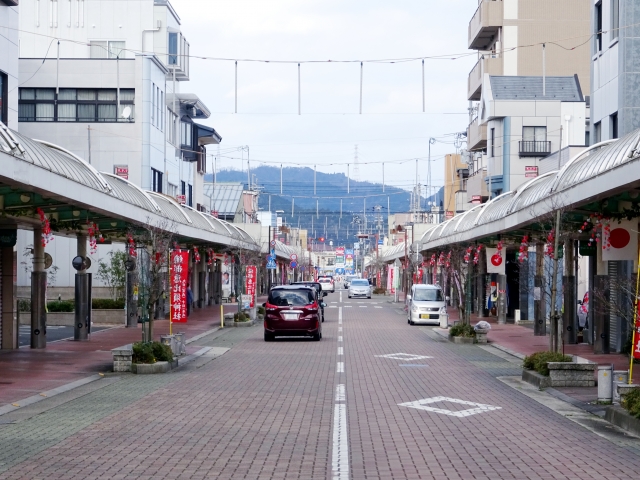
Photo by 短毛丸
Transportation services to and from a city is a major influence on visitors hence I wish to share how it works in Ayabe city. It is easy to get to Ayabe City by train. The closest big airport is called Kansai International Airport and it is in the city of Osaka.
You can go to Ayabe City by taking a train from the airport. Do not expect to see the typical bustling city train station. Ayabe has a station that is never crowded because of the few train schedules. Bus services are available to designated parts of the city and the taxi services are effective, punctual and reliable.
Some exciting things to do in Ayabe City that you shouldn’t miss:
Despite not being inside Ayabe town, it will be a travesty not to mention the nearby beauty called Amanohashidate. Amanohashidate is a pretty strip of sand close to Ayabe City. It is thought to be one of the top three most beautiful places in Japan. People who visit the place can pay to borrow bikes and ride on the sandy land, or they can take a boat tour to see the beautiful sights.
The Chirimen Craft Museum in Ayabe City showcases the silk textile industry for which the city is famous. The Chirimen Craft Museum displays a special kind of silk fabric called chirimen, which is made in a crepe-like style using traditional crafting techniques. People who come to visit can find out about what happened in the past, how things are done, and watch skilled people doing their job.
Ankukoji Temple is somewhere that won’t be talked about much by tour guides but I do have a personal connection and like for this extremely calm temple. The scenery and the ambience of an ancient temple gives it an edge over any other place you could possibly visit in Ayabe city.
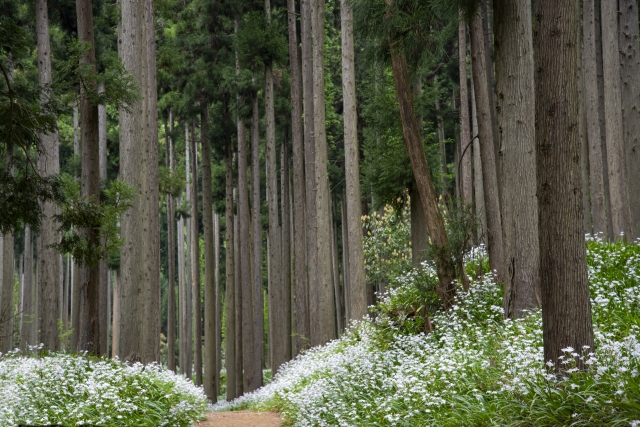
Photo by ヒゲオヤジ
Discover the peaceful Ayabe Bamboo Forest, famous for its tall bamboo trees. Go for a stroll on the nice paths and enjoy the peacefulness and prettiness of the forest. The noise made by bamboo leaves moving in the wind makes a calming mood.
Heian no Mori Ayabe is a park with lots of nature and fun things to do outside. It also has really pretty views. Have fun walking or riding a bike on the forest paths, have a meal by the river, or try catching fish in the special spots. Lots of people really like going to the park when the cherry trees are blooming.
Ayabe Castle Ruins: Ayabe Castle used to be an important castle long ago, especially during the Sengoku period. The castle is no longer there, but the ruins give us a look into the history of the area. Have fun in the nearby park and look at the amazing views of the city from the tall deck.
Come to Ayabe City Museum of Art and History to discover and explore our community’s culture, history, and artwork. The museum displays many different things from the past, like handmade items, old discoveries, and artwork made by people who live nearby.
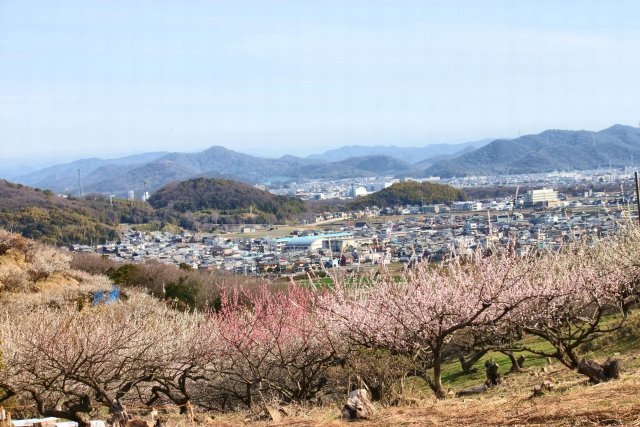
Photo by rupann7777777
Ayabe Winery is famous for making really good wines. Come and visit the winery to see how wine is made and try different types of wine. The wine factory also has a place to eat where you can enjoy tasty food with their wines.
Make sure to look at the times when the attractions are open and if you need to book in advance before you go. Have a great time checking out Ayabe City!
Photo Credits:
Additional photos by 短毛丸 ヒゲオヤジ & rupann7777777
All other content (text) created by the original author and © 2024 MUSUBI by Borderlink
Former Nagoya resident Victoria Onuma shares her picks for five of the best foods to try in Japan’s central city, and where you can taste them!
I lived in Nagoya for 2 years prior to moving to Saitama, and I had already been there many times growing up to visit my grandma. Nagoya is often overlooked as a place to visit; it has even ranked in 1st place as the most unpopular city to visit many times! It is the proverbial middle child between the more famous Tokyo and Osaka. But one area where Nagoya matches if not surpasses them is the cuisine. One of the things I miss most about living in Nagoya is the food. Famous for its red miso and hearty dishes, Nagoya is home to some of the tastiest foods in all Japan.
Here are some of my favorite local foods I like to eat whenever I visit Nagoya, and where you can find them:
Miso-katsu at Yabaton & Miso-nikomi udon at Yamamotoya
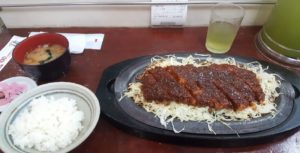 Nagoya is most famous for its red miso dishes. My favorites are miso-katsu and
Nagoya is most famous for its red miso dishes. My favorites are miso-katsu and
miso-nikomi udon. Misokatsu is tonkatsu but doused in miso sauce. Yabaton is the most famous miso-katsu restaurant in Nagoya. They were established in 1947 and have remained loved by the people of Nagoya ever since. They have about 8 locations in Nagoya, and if you’re going to get some miso-katsu in its hometown, you can’t go wrong with them.
Miso-nikomi udon is udon simmered in a thick miso-based soup, often served bubbling in an earthenware pot. The texture of the udon is much firmer than usual and the soup is also much stronger tasting than udon you would eat in Tokyo. For tasting that, I recommend the Yamamotoya restaurant.
Hitsumabushi at Atsuta Horaiken
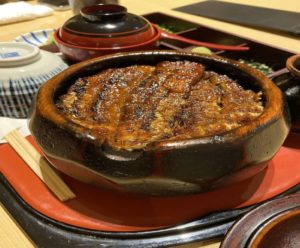 A little on a pricier side at almost 4000 yen per bowl, Hitsumabushi is a must-try when you’re in Nagoya. Hitsumabushi is charcoal-grilled eel that is dipped into a soy-sauce based sauce, served in a rice bowl. The outside of the unagi (eel) is crispy while the inside is fluffy.
A little on a pricier side at almost 4000 yen per bowl, Hitsumabushi is a must-try when you’re in Nagoya. Hitsumabushi is charcoal-grilled eel that is dipped into a soy-sauce based sauce, served in a rice bowl. The outside of the unagi (eel) is crispy while the inside is fluffy.
There are four steps you must follow when you eat hitsumabushi for the first time. First, you put a quarter of the rice and eel into a smaller serving bowl and eat it on it’s own. Second, you can sprinkle toppings such as green onion, nori and wasabi onto the rice and eel. For the third quarter, you put the toppings on and then pour some dashi soup into the bowl making it into an ochazuke (rice with liquid poured on it). For the last remaining quarter, you can enjoy it however you liked it the most. Personally, I like to finish ochazuke style.
My favorite place to eat hitsumabushi is Houraiken. They have two locations; one is in Matsuzakaya department store and the other is by Meiji-jingu (a big shrine you should visit!). The one in Matsuzakaya is more modern with western tables and chairs, while the other one is more traditional, as they have low tables and you sit on the ground on a cushion.
Soufflé Pancakes at Elk
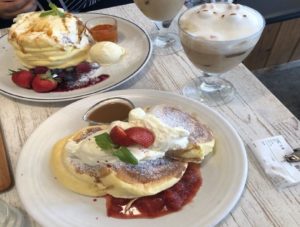 Nagoya is also famous for their “morning” foods. Which is breakfast, or when they give you complimentary food like toast with a side of anko or egg if you order a drink. My favorite place to visit is Elk. Although they do not have the traditional “morning” sets, they have soufflé pancakes and 3D latte art.
Nagoya is also famous for their “morning” foods. Which is breakfast, or when they give you complimentary food like toast with a side of anko or egg if you order a drink. My favorite place to visit is Elk. Although they do not have the traditional “morning” sets, they have soufflé pancakes and 3D latte art.
The soufflé pancakes are made to order, so it usually takes around 20-30 minutes for the food to arrive. The presentation is impeccable and certainly picture-worthy compared to all the other foods that are famous in Nagoya (since they’re all brown)!
Taiyaki at Osu shopping street
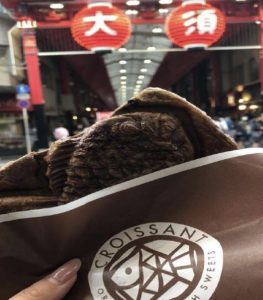 Lastly we have Osu-kannon shopping street. It is an old style shopping street that is famous for tabearuki, which means eating while walking (often seen as a faux pas elsewhere, but not here!)
Lastly we have Osu-kannon shopping street. It is an old style shopping street that is famous for tabearuki, which means eating while walking (often seen as a faux pas elsewhere, but not here!)
There are many food vendors you can enjoy, such as takoyaki, okonomiyaki, taiwanese chicken, bubble tea and taiyaki. My favorite treat to get when I’m in the area is the chocolate croissant taiyaki. They also have an assortment of regular taiyaki and seasonal flavors as well.
Although Nagoya may not be the biggest city with the most exciting sightseeing or nightlife compared to other major cities in Japan, it is certainly worth it to visiting to check out the local restaurants, cute cafes, and some great food!
***
Living in Japan and want to enjoy the delicious cuisine of Nagoya? There’s still time to apply and be an ALT in Japan’s central city! Read on for more details!
Photo Credits:
Additional photos were provided by Victoria Onuma, used with permission.
All other content (text) created by the original author and © 2024 MUSUBI by Borderlink
Top photo: ojisan200 on PhotoAC
Eating healthy in Japan can make you feel good and bring you joy. Japanese food is famous for using fresh ingredients, having well-balanced flavors, and making dishes look pretty. Sometimes I spend more time admiring the food presentation than actually eating it! Here are some easy ways to eat healthy in Japan.
Give Traditional Japanese Cuisine a Go
Exploring options like sushi, sashimi, miso soup, grilled fish, and steamed vegetables will give you a world of great flavors. You can go to nearby farmers’ markets or grocery stores to buy fresh fruits, vegetables, and seafood that are currently being harvested. These ingredients typically have more taste and are rich in nutrients.
Eat the Sea! (not literally)
You can try many different types of seafood in Japan because it has a lot of ocean around it. Seafood is very important in Japanese food. Fish like salmon, mackerel, tuna, and sardines have omega-3 fatty acids that are good for your heart. Include seafood in your meals often and opt for grilled, steamed, or raw options rather than fried or breaded ones.
Eat Fermented Foods
Fermented foods are commonly eaten in Japanese cooking and offer many good effects for our health. Foods such as miso, natto, and tsukemono are packed with good bacteria called probiotics. These good bacteria are great for keeping our gut healthy and helping with digestion.
Eat Smaller Portions
Japanese meals usually include several small dishes served in moderate amounts. This method can assist you in managing the amount of food you eat and stop yourself from eating too much. Instead of putting a lot of food on your plate, try eating a little bit of different foods like soup, salad, meat or fish, and veggies.
Limit Process Foods
I know how hard it is to completely adhere to this, but foods like instant ramen, frozen meals, and snack usually have a lot of salt, bad fats, and chemicals added to them. Try to eat fewer processed foods and choose fresh, natural ingredients whenever you can.
Watch the Carbs
I have been reminded of this statement numerous times since deciding to move to Japan, so I feel compelled to share it. Remember to pay attention to how much rice and noodles you eat. Rice and noodles are popular foods in Japanese cooking. When including them in your diet, it is important to pay attention to how much you eat, especially if you are limiting your carbohydrate intake. Choose a smaller amount of food or select whole grain options like brown rice or soba noodles instead. These foods have more fiber and nutrients to benefit your health.
Drink Tea to Stay Hydrated
Japanese green tea, like sencha or matcha, is a popular drink that has many health advantages. This thing has lots of antioxidants, can make your body work faster, and helps you feel calm. Drink tea all day to keep yourself hydrated and enjoy the good effects on your health.
Be Careful of Hidden Sugars
in Japanese dishes, especially in desserts and sweetened drinks. While it’s okay to have some traditional Japanese sweets like mochi occasionally, it’s better to not have too many sugary treats. Instead, choose fresh fruits as a healthier option.
Conclusion
Have a great time eating in Japan. Eating healthy here is not only about the food, but also about the whole dining experience. Make sure to enjoy and appreciate your meals by taking your time to enjoy the tastes and textures. Also, have fun eating with other people. When you eat, paying attention and being thankful can make you feel better overall.
Don’t forget that having a balanced and moderate diet is important for staying healthy. Cheers!!!
Top photo: ojisan200 on PhotoAC
All other content (text) created by the original author and © 2024 MUSUBI by Borderlink
